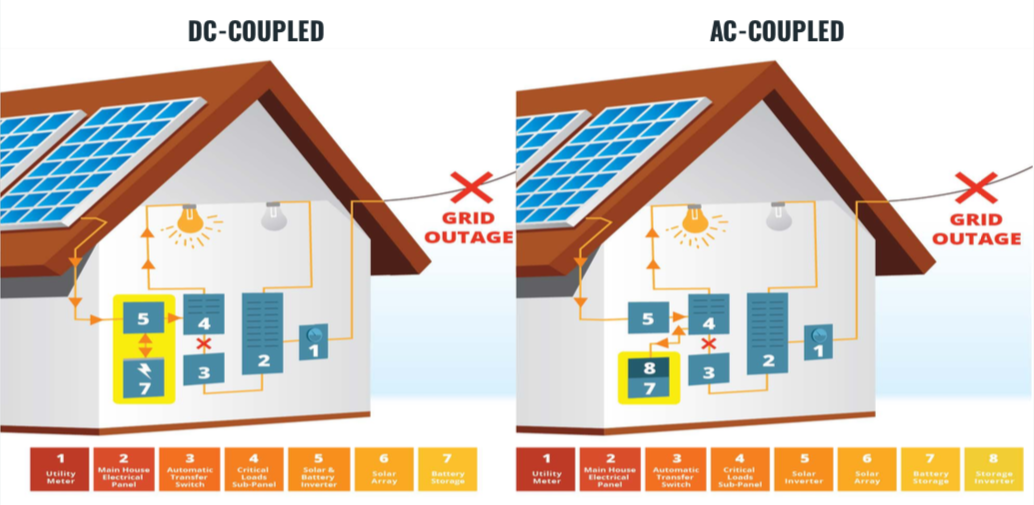Are there different ways batteries can connect to my solar array?
Are there different ways batteries can connect to my solar array?
When you’re thinking about integrating battery storage and solar, there are two ways to do it: DC coupling and AC coupling.
DC coupling
DC (or “Direct Current”) coupled systems are most common when installing both solar and battery storage at the same time. In this setup, the solar electricity is fed directly into the battery system (in DC form) without the need for any conversion. Often in DC coupled systems, the battery and solar systems share one inverter. DC coupled systems also have an easier time ensuring that your battery is only charged by solar electricity (as opposed to utility electricity from the grid). This is important for qualifying for the federal tax credit.
AC coupling
AC (or “Alternating Current”) coupled systems are made up of a solar array and battery system that are independent of each other. The AC coupled configuration requires two inverters: one for the solar array (to convert the solar electricity from its natural DC form to AC so that it can flow directly into your home) and one for the battery (to convert the solar electricity back to DC so that it can be used to charge the battery). Typically, the energy produced from your solar system enters your house. Then, excess electricity not used by your home is stored in the battery.
When adding batteries to an existing solar array, many systems will be AC coupled. This is done to allow you to keep your existing solar inverter and wiring. You’ll add a second inverter in addition to your existing solar inverter. It’s important to note that AC coupled systems make it more difficult to guarantee your battery is exclusively charged by solar which is an important factor for federal tax credit eligibility.

